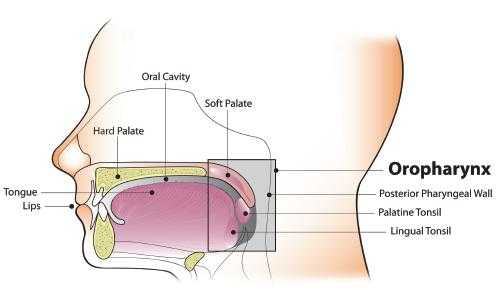Cancers Associated with Human Papillomavirus (HPV)
Cervical cancer is the most common HPV-associated cancer. Almost all cervical cancer is caused by HPV. Some cancers of the vulva, vagina, penis, anus, and oropharynx (back of the throat, including the base of the tongue and tonsils) are also HPV-associated. Research is still being done to understand how and to what extent HPV causes these cancers. The following diagram shows the oral cavity and oropharynx.

In general, HPV is thought to be responsible for more than 90% of anal and cervical cancers and more than 50% of vaginal, vulvar, and penile cancers. Cancers of the head and neck are mostly caused by tobacco and alcohol, but recent studies1 2 3 show that about 60% to 70% of cancers of the oropharynx may be linked to HPV. Many of these may be caused by a combination of tobacco, alcohol, and HPV. For more information, see How Many Cancers Are Linked with HPV Each Year?
Most of the time, HPV goes away by itself within two years and does not cause health problems. It is thought that the immune system fights off HPV naturally. It is only when HPV stays in the body for many years that it can cause these cancers. It is not known why HPV goes away in most, but not all cases.
References and Figure Source
1U.S. assessment of HPV types in cancers: implications for current and 9-valent HPV vaccines.
2HPV and rising oropharyngeal cancer incidence in the United States.
3HPV prophylactic vaccines and the potential prevention of noncervical cancers in both men and women.
Figure Source: The connection between HPV and oropharyngeal squamous cell carcinomas in the United States: implications for dentistry.
- Page last reviewed: July 5, 2013
- Page last updated: March 29, 2016
- Content source:


 ShareCompartir
ShareCompartir